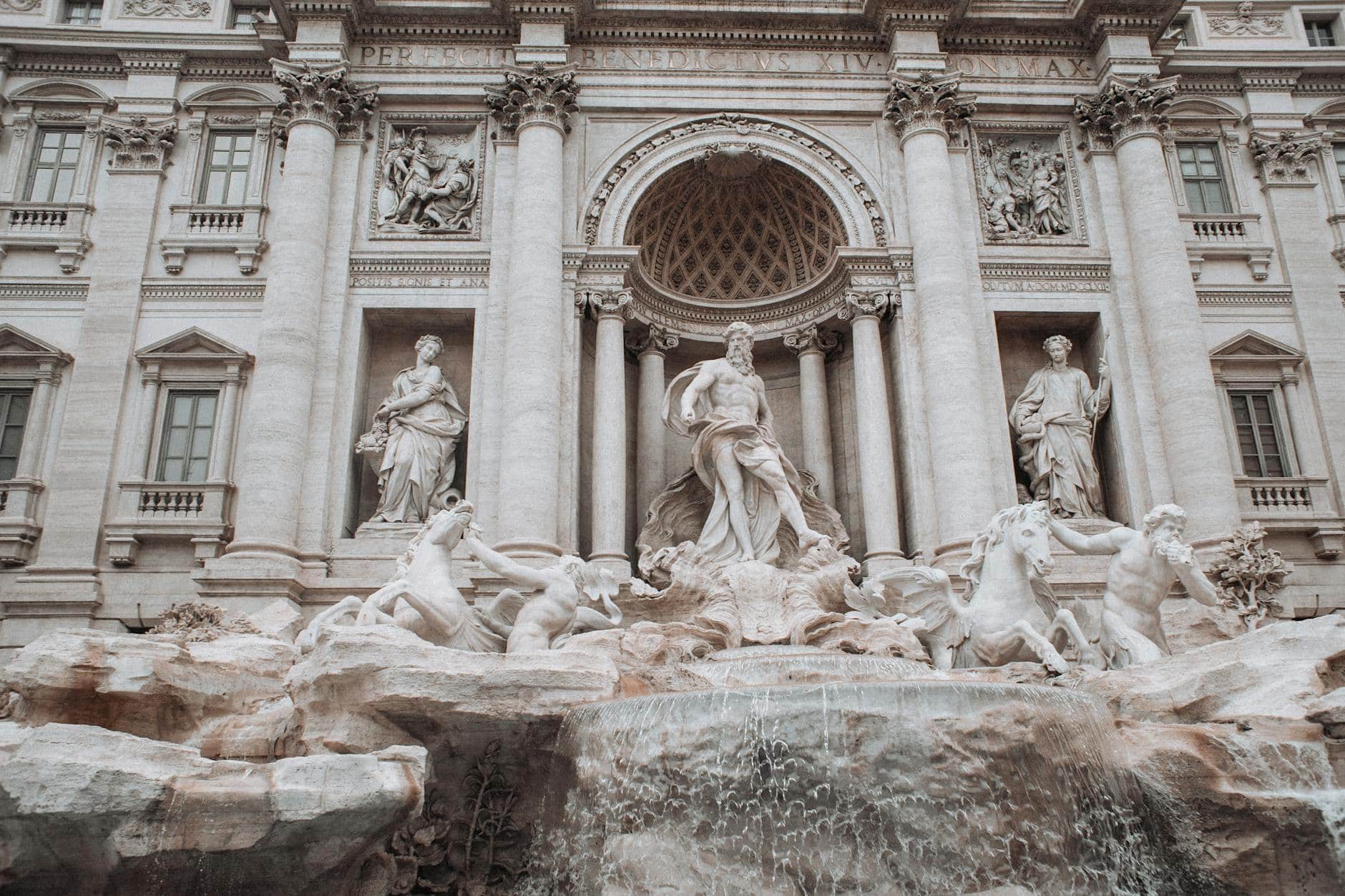Trevi Fountain Restoration and the Impact on Tourist Experience
Rome, with its rich tapestry of history, is a city that beckons travelers from around the globe. Among its many jewels, the Trevi Fountain stands as an iconic symbol of Baroque artistry and Roman splendor. Yet, for those planning a visit in the coming months, be prepared for a different experience. The celebrated monument is currently undergoing a significant restoration, altering the typical tourist interaction with this beloved site. Let’s look at the impact on the tourist experience as a result of the Trevi Fountain restoration.

Why the Trevi Fountain Needs a Facelift
Last month, the Trevi Fountain was drained in preparation for a comprehensive restoration project. This task is not just about aesthetics but is crucial for maintaining the structural integrity of this 18th-century masterpiece. According to the Capitoline Superintendency, the focus of the maintenance is on cleaning the stone surfaces and repairing the joints of the fountain’s lower sections. This meticulous work ensures that the Trevi can continue to enchant visitors for generations to come.
The restoration is part of a broader €1.2 million initiative to rejuvenate several of Rome’s historic fountains, including the Fontana delle Tartarughe. The timing isn’t coincidental; the city is preparing for the 2025 Jubilee, a significant event for the Vatican anticipated to draw millions from around the world.
A New Perspective with the Temporary Walkway
Inaugurated by Rome’s Mayor Roberto Gualtieri, a temporary steel walkway has been erected over the Trevi’s basin. This allows tourists to continue enjoying the fountain’s majestic façade, albeit from a new vantage point. The walkway, accommodating up to 130 visitors at a time, offers a unique and close-up perspective. However, this setup has led to longer wait times for those seeking a front-row view.
The Capitoline Superintendency has described this as a “different way of observing the fountain.” The close-up perspective provides opportunities to gather new data on visitor interactions, which could be pivotal in addressing the monument’s ongoing issues with overcrowding.
The Coin Toss Tradition Hits a Snag
For many, a visit to the Trevi Fountain is incomplete without participating in the age-old tradition of tossing a coin over one’s shoulder, a ritual believed to ensure a return to Rome or bring about romantic fortunes. This tradition is also a significant charity driver, with collected coins supporting Caritas, an organization that aids the needy.
However, with the fountain now drained, tossing coins into its basin is both impractical and prohibited, with violators facing a €50 fine. Instead, a makeshift tub, humorously dubbed the “municipal swimming pool,” has been placed for visitors to continue this tradition, albeit in a less glamorous fashion.
The Future of Trevi Fountain Visits
The restoration project is anticipated to conclude by the year’s end. Yet, the changes it brings might linger longer. Rome’s city officials are considering new measures to combat overcrowding, including the potential introduction of a €2 entrance fee and limiting visits to 30 minutes. This would mark a significant shift from the fountain’s longstanding tradition of free and unrestricted access.
Such measures are under consideration as the Trevi Fountain has long faced challenges with managing its popularity. Featured in classic films like Federico Fellini’s “La Dolce Vita,” its allure is undeniable, but so are the logistical challenges it presents in terms of crowd control.
What Travelers Need to Know
For travel enthusiasts, a visit to the Trevi Fountain remains a bucket-list experience, even amidst restoration. While tourists might encounter some inconveniences during this period, the promise of an even more beautiful Trevi Fountain awaits.
Those planning a visit should anticipate longer waits and perhaps budget for the proposed entrance fee. The changes also underscore the importance of respecting the site’s new rules, ensuring that this historic landmark can be enjoyed by all for years to come.
Conclusion
The Trevi Fountain’s restoration is a testament to Rome’s commitment to preserving its cultural treasures. While the current changes might slightly dampen the tourist experience, they are necessary steps in safeguarding the fountain’s grandeur. For travelers, this period offers a chance to witness history in the making—a fleeting moment of transformation for a timeless masterpiece.
For those interested in exploring more about Rome or planning a visit, further resources and travel guides are available to help make the most of your experience. Witnessing the Trevi Fountain’s transformation is an opportunity to see firsthand how history and modernity collide in the heart of Rome.
Thanks for reading. We hope to see you at the places where we go.
#travelnews
